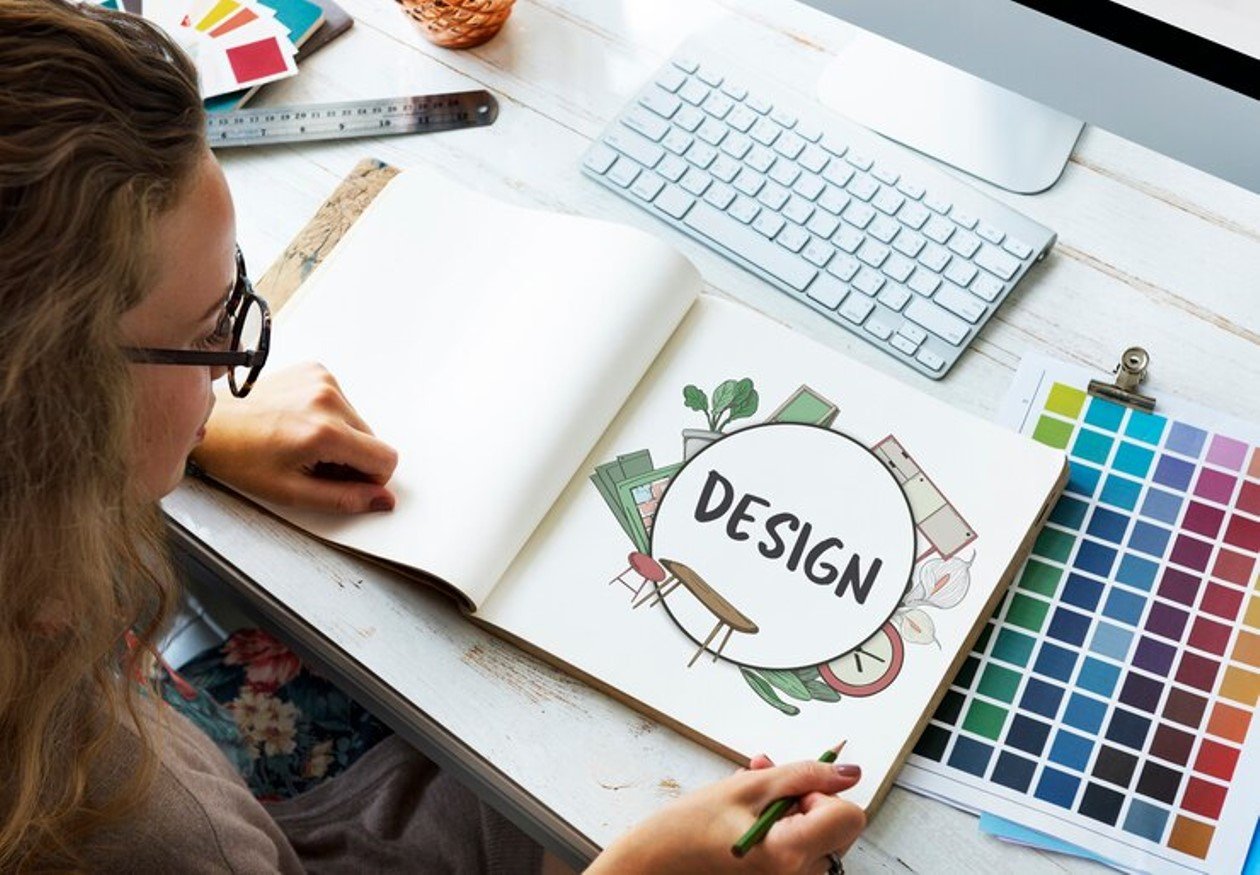How to Become a Logo Designer: A Comprehensive Guide

Logo design is a dynamic and rewarding field that requires a combination of creativity, technical skills, and business acumen. As businesses increasingly recognize the importance of a strong visual identity, the demand for skilled logo designers is on the rise. If you’re passionate about graphic design and want to embark on a journey to become a logo designer, this comprehensive guide will provide you with the essential steps to kickstart your career.
A. Importance of Logos
In the digital age, where attention spans are shorter than ever, a well-crafted logo serves as a visual anchor for businesses. Logos convey brand identity, build trust, and leave a lasting impression on consumers.
B. Growing Demand for Logo Designers
With businesses realizing the impact of a memorable logo, the demand for skilled logo designers is witnessing a significant upswing. Whether it’s a startup or an established corporation, companies are investing in creating unique and impactful logos to stand out in the competitive market.
Skills Required
A. Graphic Design Fundamentals
1. Color Theory
Understanding the psychology of colors and their impact on human emotions is fundamental to creating compelling logos. A skilled logo designer should master the art of selecting colors that resonate with the brand’s message.
2. Typography
Typography plays a crucial role in logo design. A designer must have a keen eye for choosing fonts that complement the brand’s personality and ensure readability across various platforms.
Read More: 3 Easy Steps to Become a Content Writer
B. Creativity and Innovation
Logo design is an art form that thrives on creativity. Thinking outside the box and pushing the boundaries of design norms are key attributes that set exceptional logo designers apart.
C. Software Proficiency
1. Adobe Illustrator
Adobe Illustrator is the industry standard for vector graphic design, and mastering it is essential for logo designers. Proficiency in Illustrator allows designers to create scalable and high-quality logos.
2. Canva
While professional designers often use complex software, Canva provides a user-friendly platform for beginners. Its simplicity and accessibility make it a valuable tool for creating basic logos and developing design skills.
Educational Pathways
A. Formal Education in Graphic Design
Many logo designers begin their journey by pursuing formal education in graphic design. A degree in graphic design provides a comprehensive understanding of design principles, software applications, and industry trends.
B. Online Courses and Certifications
For those looking for more flexibility, online courses and certifications offer a viable alternative. Platforms like Skillshare, Udemy, and Coursera provide a range of courses catering to different skill levels.
C. Self-learning Through Tutorials
The internet is a treasure trove of tutorials covering every aspect of logo design. Self-learners can find valuable resources on platforms like YouTube and design forums, allowing them to progress at their own pace.
Building a Portfolio
A. Showcasing Diverse Styles
A diverse portfolio demonstrates versatility. Including logos with different styles and themes showcases your ability to adapt to varying client needs.
B. Including Personal Projects
In addition to client work, incorporating personal projects into your portfolio highlights your passion and creativity. It provides a glimpse into your design aesthetic and thought process.
C. Highlighting Client Work
Featuring successful client collaborations adds credibility to your portfolio. Include before-and-after visuals, client testimonials, and details about the challenges you overcame during the design process.
Networking and Collaboration
A. Joining Design Communities
Networking with fellow designers is invaluable. Joining design communities, both online and offline, allows you to exchange ideas, seek advice, and stay informed about industry trends.
B. Collaborating With Other Designers
Collaborative projects with other designers provide opportunities to learn and grow. Working with peers exposes you to different perspectives and enhances your problem-solving skills.
C. Attending Industry Events
Participating in design conferences, workshops, and exhibitions provides exposure and networking opportunities. Meeting industry professionals and attending talks by seasoned designers can offer valuable insights.
Establishing an Online Presence
A. Creating a Professional Website
A well-designed website serves as your digital portfolio. Showcase your best work, provide a brief bio, and include contact information to make it easy for potential clients to reach you.
B. Utilizing Social Media Platforms
Social media is a powerful tool for self-promotion. Share your work on platforms like Instagram, Twitter, and LinkedIn to reach a broader audience and connect with potential clients.
C. Writing a Compelling Bio
Craft a compelling bio that reflects your personality and passion for design. Use this opportunity to communicate your unique approach to logo design and what sets you apart from others in the field.
Freelancing vs. Employment
A. Pros and Cons of Freelancing
Freelancing offers flexibility and control over your projects but comes with the challenge of securing consistent work. Consider the pros and cons to determine if freelancing aligns with your career goals.
B. Benefits of Working for a Design Firm
Employment with a design firm provides stability and exposure to a variety of projects. It offers a collaborative environment where you can learn from experienced designers and build your skills.
Setting Your Pricing
A. Factors to Consider
Determining your pricing requires consideration of factors such as your skill level, experience, and the complexity of the project. Research industry standards and adjust your rates accordingly.
B. Researching Industry Standards
Stay informed about the current market rates for logo design. Researching industry standards ensures that you remain competitive while valuing your skills appropriately.
C. Offering Packages and Discounts
Providing package deals or discounts for bundled services can attract clients and encourage long-term partnerships. Clearly outline what each package includes to set clear expectations.
Handling Client Relationships
A. Effective Communication
Clear and transparent communication is crucial for a successful designer-client relationship. Ensure that you understand the client’s vision and expectations from the outset.
B. Managing Expectations
Set realistic expectations regarding timelines, revisions, and project deliverables. Managing client expectations helps prevent misunderstandings and ensures a smoother workflow.
C. Receiving and Implementing Feedback
Feedback is an integral part of the design process. Be open to constructive criticism, and use feedback as an opportunity to refine your work and exceed client expectations.
Staying Updated on Trends
A. Subscribing to Design Publications
Stay informed about the latest design trends by subscribing to industry publications. Magazines, blogs, and newsletters provide insights into emerging styles and techniques.
B. Following Design Influencers
Social media is a great platform to follow design influencers. Keep an eye on the work of established designers to gain inspiration and stay current with evolving design trends.
C. Attending Design Conferences
Attending design conferences exposes you to cutting-edge ideas and innovations. Networking with professionals and attending workshops enhances your skills and keeps you ahead of the curve.
Overcoming Challenges
A. Dealing With Creative Blocks
Creative blocks are inevitable. Experiment with different techniques, take breaks, and seek inspiration from diverse sources to overcome creative hurdles.
B. Handling Difficult Clients
Not every client interaction will be smooth. Developing strong interpersonal skills and patience is crucial when dealing with challenging clients.
C. Managing Time Effectively
Effective time management is key to meeting deadlines and maintaining a healthy work-life balance. Use tools like project management software to stay organized and on track.
Marketing Yourself
A. Utilizing Social Media Marketing
Leverage the power of social media to market your services. Share your portfolio, engage with your audience, and use relevant hashtags to increase visibility.
B. Collaborating With Influencers
Partnering with influencers in related industries can expand your reach. Collaborations can lead to exposure among new audiences interested in design services.
C. Seeking Client Testimonials
Client testimonials serve as social proof of your skills. Request feedback from satisfied clients and prominently display testimonials on your website and promotional materials.
Advancing Your Career
A. Pursuing Advanced Certifications
Continued learning is essential in a dynamic field like logo design. Pursue advanced certifications to deepen your expertise and stay competitive in the industry.
B. Teaching or Mentoring
Sharing your knowledge by teaching or mentoring others can be rewarding. It not only contributes to the design community but also helps you solidify your own understanding of design principles.
C. Exploring Related Design Fields
Logo design is just one facet of graphic design. Explore related fields such as branding, web design, or illustration to diversify your skill set and open up new opportunities.
Common Misconceptions
A. Logo Design Is Easy
Contrary to popular belief, logo design is a complex process that requires a deep understanding of branding, aesthetics, and marketing.
B. You Need a Degree to Succeed
While formal education can be beneficial, success in logo design is not limited to those with a degree. Skills, creativity, and a strong portfolio often weigh more heavily.
C. Success Happens Overnight
Building a successful career in logo design takes time and dedication. Overnight success is rare, and consistent effort is key to long-term success.
Read More: How to Become a Financial Analyst
Conclusion
A. Recap of Key Points
Becoming a successful logo designer involves mastering graphic design fundamentals, building a strong portfolio, networking, and marketing yourself effectively.
B. Encouragement for Aspiring Logo Designers
Embarking on a career in logo design is a journey filled with challenges and triumphs. Stay dedicated, keep learning, and embrace the creative process to carve your path to success.
Frequently Asked Questions
Q: How long does it take to become a proficient logo designer?
A: The timeline varies based on individual dedication and the chosen learning path. On average, it may take several months to a few years to become proficient.
Q: Is a degree necessary to start a career in logo design?
A: While a degree can be beneficial, it is not mandatory. Building a strong portfolio and acquiring relevant skills are often more critical.
Q: Can I become a logo designer without formal education?
A: Yes, many successful logo designers are self-taught. Online courses, tutorials, and hands-on practice can be equally effective in acquiring the necessary skills.
Q: How do I handle creative blocks in logo design?
A: Creative blocks are common. Take breaks, seek inspiration from diverse sources, and experiment with different design approaches to overcome them.
Q: What software should I learn for logo design?
A: Adobe Illustrator is widely used in the industry, but Canva is also a beginner-friendly option. Learning both provides versatility in your skill set.





